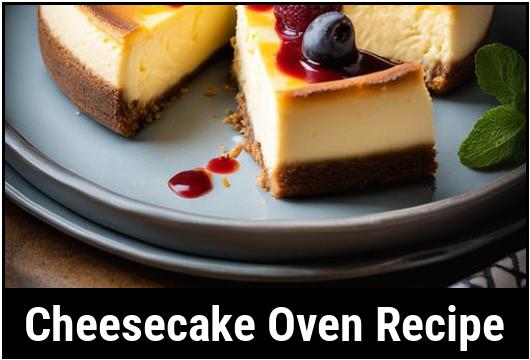
The Ultimate Cheesecake Oven Recipe For Divine Treats
Are you a cheesecake aficionado? Do you crave the creamy, melt-in-your-mouth goodness of this delectable dessert? Look no further! In this comprehensive guide, we will delve into the fascinating world of cheesecake oven recipes. From understanding the food science behind the perfect cheesecake to mastering culinary techniques, and from tips and tricks to variations that will delight your taste buds, this article has got you covered. So put on your apron, preheat your ovens, and get ready to embark on a cheesecake adventure like no other!
Understanding the Food Science:
It’s impossible to create a perfect cheesecake without understanding the science behind it. The foundation of a well-baked cheesecake lies in achieving the perfect balance between ingredients and baking technique. Let’s explore the key elements of this heavenly dessert:
1. The Cream Cheese:
Cream cheese is the star ingredient of any cheesecake. Its richness and tanginess give the dessert its signature flavor and texture. Make sure to use high-quality, full-fat cream cheese for the best results. Avoid low-fat or reduced-fat varieties, as they can compromise the creaminess of your cheesecake.
2. Eggs:
Eggs play a vital role in binding and structure formation. They provide stability to the cheesecake, preventing it from collapsing or cracking during baking. Be sure to use room temperature eggs to achieve optimal results. Cold eggs can result in an uneven mix and lead to an undercooked or overcooked cheesecake.
3. Sugar:
Sugar adds sweetness and enhances the overall flavor and texture of the cheesecake. It also aids in caramelization, giving the dessert a delightful golden color. Use granulated sugar and remember to adjust the sweetness based on personal preference.
4. Crust:
The crust acts as the foundation for your cheesecake. Opt for a classic graham cracker crust or experiment with variations such as cookie crumbs or even chocolate graham crackers. Crush the cookies finely, mix them with melted butter, and press the mixture into the bottom of the baking pan for a solid base.
Culinary Details and Techniques:
Now that we’ve covered the basics, let’s dive into the culinary details and techniques that will elevate your cheesecake to new heights:
1. Selecting the Right Equipment:
To ensure evenly baked cheesecake, invest in a quality springform pan—a round pan with a removable bottom. This type of pan prevents the crust from sticking and allows for easy removal and serving.
2. Cleaning:
Cleanliness is of utmost importance when it comes to baking, including cheesecakes. Thoroughly wash and dry all utensils, bowls, and pans to avoid any contamination. A pristine workspace contributes to a satisfying end result.
3. Preparation:
Before you begin making your cheesecake, it’s essential to let all the ingredients come to room temperature. This allows for smooth blending and an even distribution of flavors. Cold ingredients can lead to clumpy batter and undercooked centers.
4. Tips to Achieve Perfection:
- Beat the cream cheese until smooth and creamy before adding any other ingredients. This step eliminates lumps and ensures a silky texture.
- Add the eggs one at a time, beating well after each addition. This gradual process combines the eggs without overmixing, preventing excess air incorporation.
- Scrape down the sides of the bowl periodically to make sure all the ingredients are thoroughly mixed.
- Avoid overmixing the batter after adding eggs, as it can result in a cracked and sunken cheesecake.
Variations to Excite Your Taste Buds:
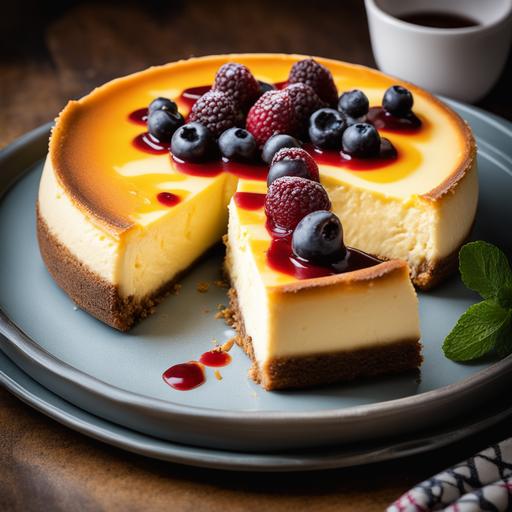
Now that you’ve mastered the basics, let’s explore some fantastic variations that will delight your family and friends:
1. Chocolate Cheesecake:
For all the chocolate lovers out there, this variation is a dream come true. Add melted semi-sweet or dark chocolate to the cream cheese mixture, creating a luscious chocolatey delight. Drizzle some melted chocolate on top, and you have a showstopper!
2. Fruit Swirl Cheesecake:
Embrace fruity goodness by incorporating fruit puree into the cream cheese mixture. Swirl it gently to create a beautiful marbled effect. Popular fruit options include raspberry, strawberry, and mango.
3. Oreo Cheesecake:
Take your cheesecake to the next level by adding crushed Oreo cookies to the crust and mixing them into the cream cheese batter. This variation delights both kids and adults alike—perfect for any occasion.
Ensuring the Perfect Doneness:
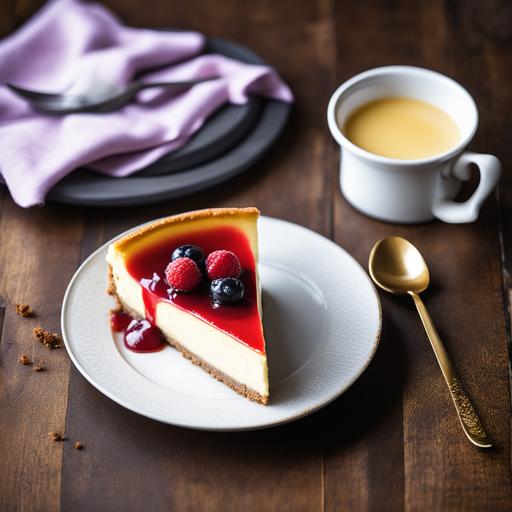
Determining the doneness of your cheesecake can be a daunting task, but fear not! Follow these foolproof checks to ensure a perfectly baked treat:
1. Jiggle Test:
Gently tap the side of the cheesecake pan. If the center jiggles slightly while the edges appear set, it’s ready to come out of the oven. Overbaking can lead to a dry and cracked cheesecake, so be vigilant.
2. Internal Temperature:
Using an instant-read thermometer, insert it into the center of the cheesecake. If the temperature reaches approximately 150°F (65°C), it’s time to remove it from the oven. This method guarantees a perfectly cooked and creamy texture.
The Perfect Cheesecake Oven Recipe:
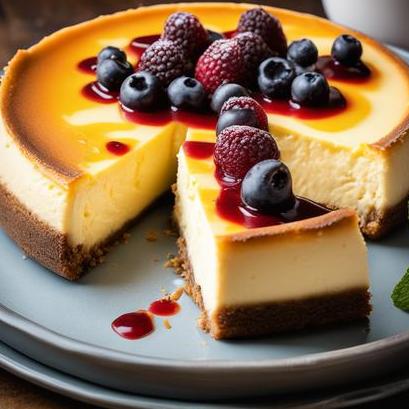
Below is a classic cheesecake recipe that combines all the information we’ve covered:
Ingredients:
- 2 cups graham cracker crumbs
- 6 tablespoons unsalted butter, melted
- 3 (8-ounce) packages cream cheese, softened
- 1 cup granulated sugar
- 3 large eggs, at room temperature
- 1 teaspoon vanilla extract
Instructions:
- Preheat the oven to 325°F (160°C). Grease a 9-inch springform pan.
- In a medium bowl, combine the graham cracker crumbs and melted butter. Press the mixture onto the bottom of the prepared pan to form a crust.
- In a large bowl, beat the cream cheese and sugar until smooth and creamy.
- Add the eggs, one at a time, beating well after each addition. Scrape down the sides of the bowl as needed. Mix in the vanilla extract.
- Pour the cream cheese batter over the crust in the springform pan, spreading it evenly.
- Bake for about 60-70 minutes, or until the edges are set and the center jiggles slightly.
- Turn off the oven and leave the cheesecake inside for an additional 30 minutes.
- Remove the cheesecake from the oven and let it cool completely. Refrigerate for at least 4 hours (but overnight is preferable) before serving.
Avoiding the Pitfalls: Overcooking and Undercooking:
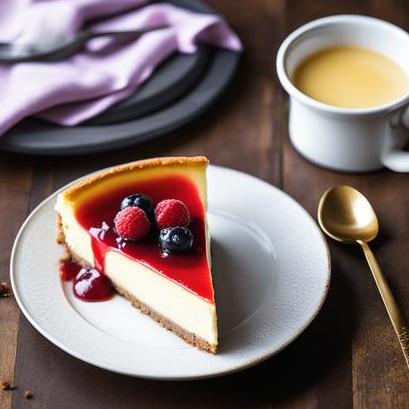
Even with all the knowledge and preparation, sometimes things don’t go as planned. Here’s how to tackle common pitfalls:
1. Overcooking:
If you notice cracks or a dry texture on the top of your cheesecake, it may have been overcooked. To salvage it, you can make an indulgent topping, such as fruit compote or chocolate ganache, to camouflage any imperfections.
2. Undercooking:
Undercooked cheesecakes can be determined by a visibly wobbly center or a very soft texture. Don’t panic! Simply return the cheesecake to the oven for an additional 10-15 minutes, keeping a close eye on it to avoid overbaking.
Conclusion:
Congratulations! You are now equipped with all the knowledge you need to create a heavenly cheesecake anytime you desire. Remember to enjoy the journey—the process of making a cheesecake is just as rewarding as savoring the final product. So, indulge your senses, experiment with flavors, and share your cheesecake creations with loved ones. Happy baking!
Sources
FAQS On Cheesecake Oven Recipe
What Temperature Should I Bake Cheesecake In The Oven?
Generally, cheesecake is best baked in a moderate temperature oven at 325°F (160°C) for about 50-60 minutes. However, the exact baking time and temperature may vary depending on your recipe, the size of your cheesecake, and your oven. Always follow the instructions carefully.
How Do I Know When My Cheesecake Is Fully Baked?
A few signs that your cheesecake is fully baked include the edges being slightly golden, the center being almost set, and the cheesecake no longer jiggling when you shake the pan. You can also insert a toothpick or cake tester into the center of the cheesecake to see if it comes out clean. But avoid over-baking as it can cause cracks in your cheesecake.
Can I Bake A Cheesecake Without A Water Bath?
While a water bath is typically recommended when baking a cheesecake to prevent cracks and ensure an even and creamy result, you can still bake a cheesecake without one. However, you should expect a slight difference in the texture and appearance of the cheesecake, and it may be more prone to cracks. If you choose to skip the water bath, you can cover the cheesecake with foil to prevent excessive browning.
How Long Should A Cheesecake Cool Before Refrigerating?
Once your cheesecake is done baking, you should let it cool to room temperature on a wire rack for at least 2 hours before refrigerating it. This allows the cheesecake to set and prevent condensation from forming inside the container. Once cooled, cover with a plastic wrap and refrigerate it for at least 4 hours or overnight.
Can I Freeze A Baked Cheesecake?
Yes, you can freeze a baked cheesecake, but be sure to allow the cheesecake to cool down to room temperature, then wrap it tightly in plastic wrap and store it in an airtight container before placing in the freezer. A frozen cheesecake can last up to two months in the freezer, but it is ideal to consume it within a month for optimal freshness. Allow the cheesecake to thaw in the fridge overnight before serving.


